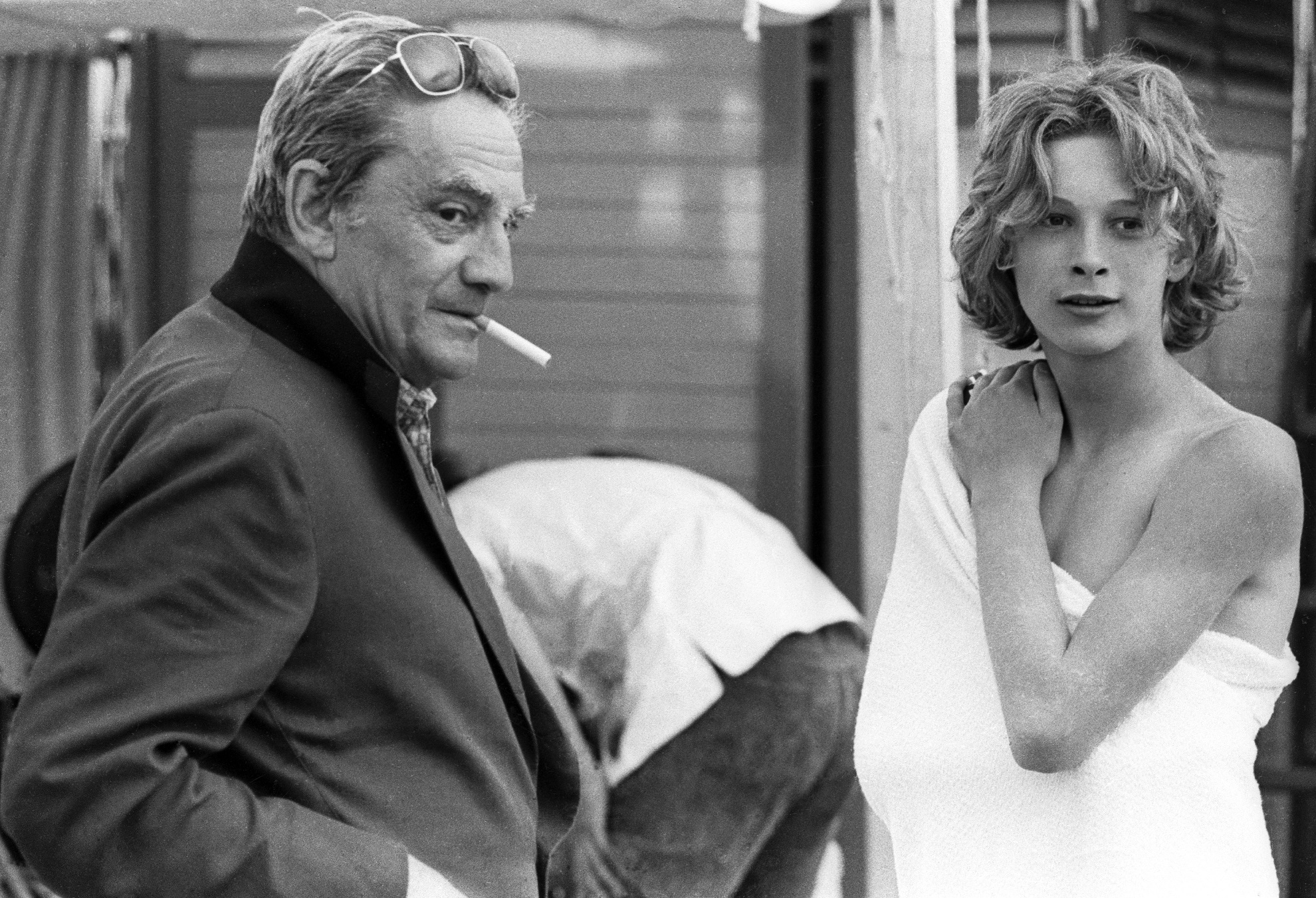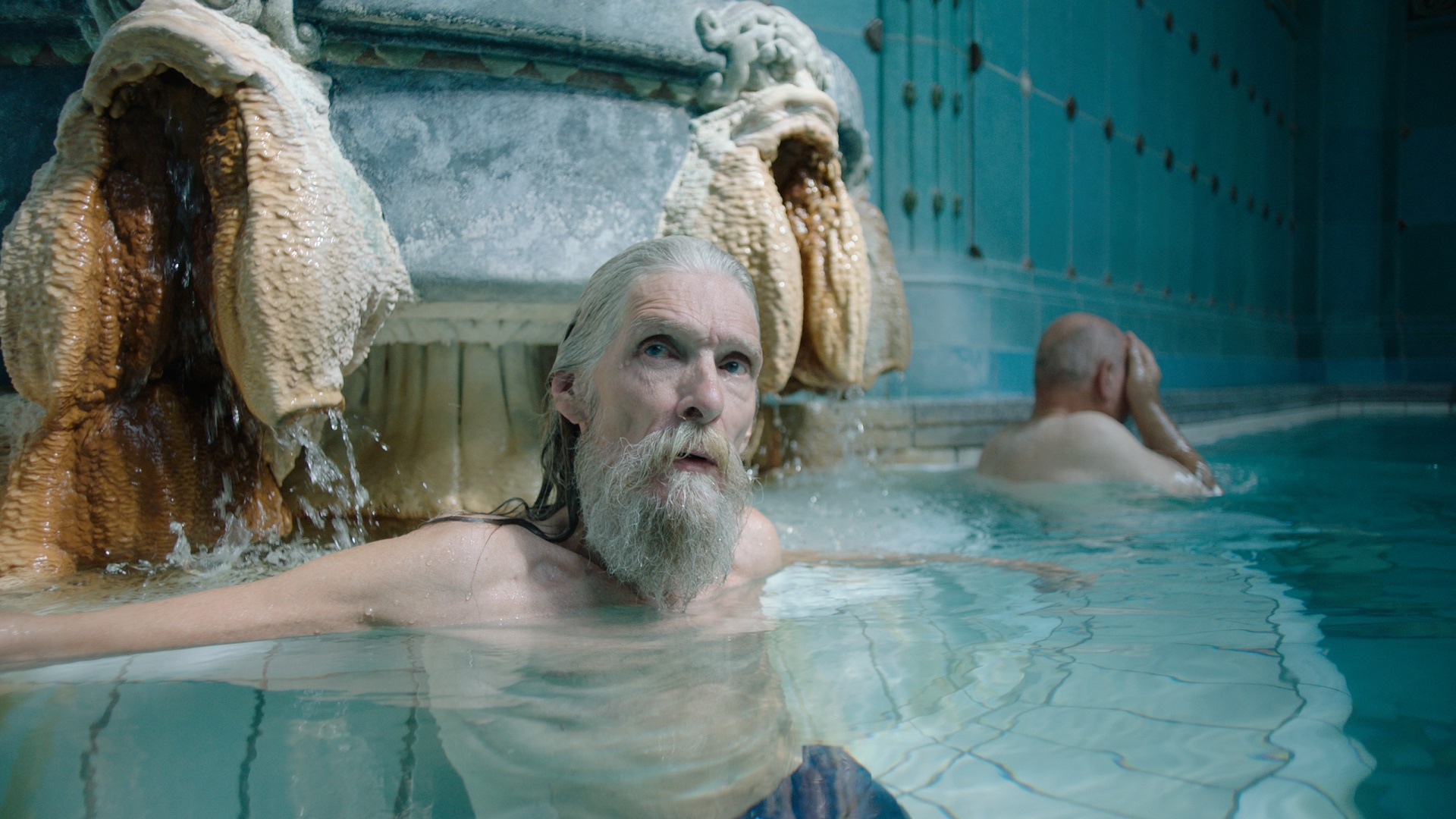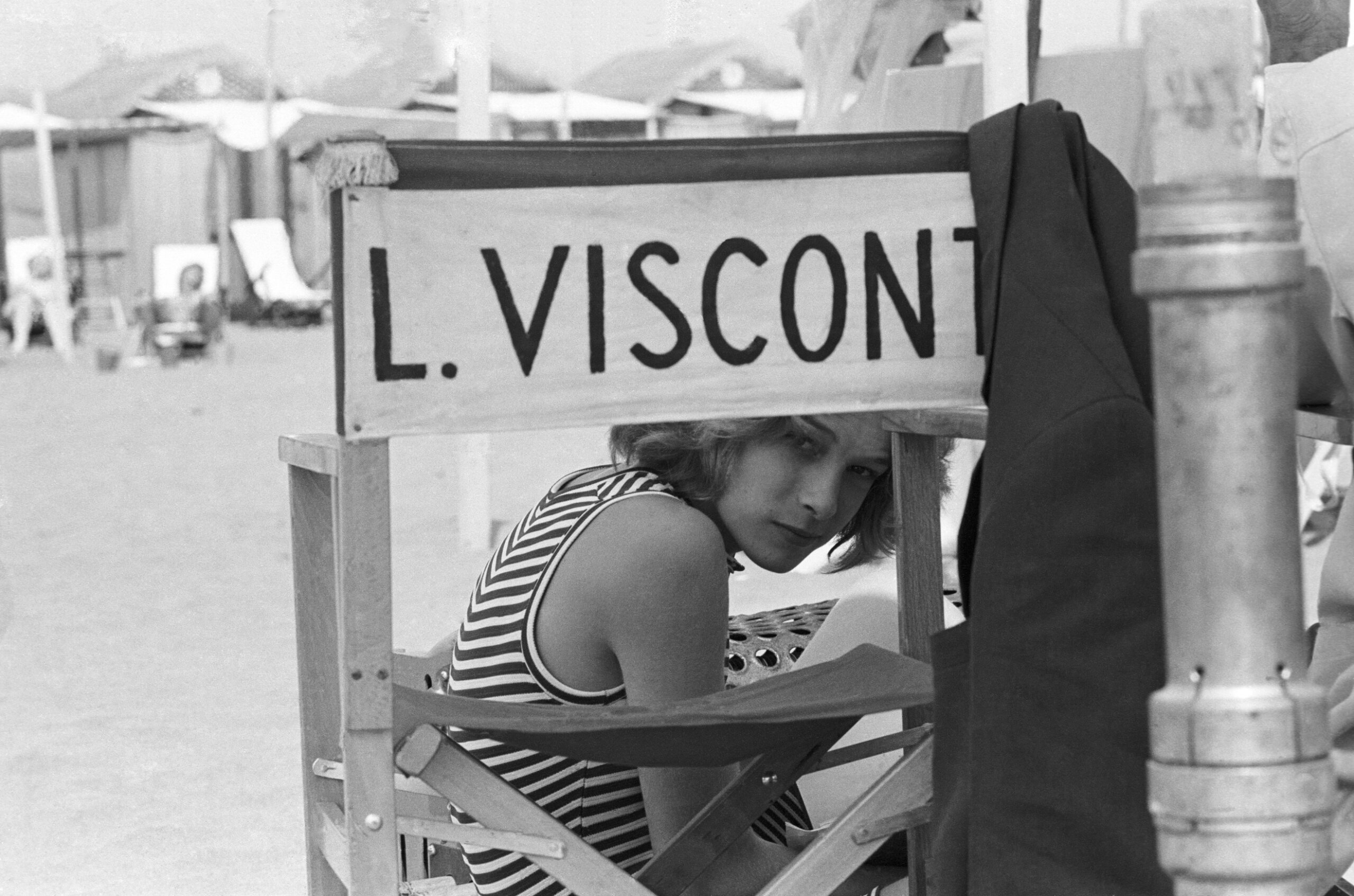Björn Andrésen never wanted to be a movie star. His grandmother, who wanted a famous grandchild, pushed him into trying out for work in films and as a model. According to director Luchino Visconti, he only came to the auditions for his film Death in Venice, which was released in 1971, because he wanted a motorcycle. But the moment Visconti saw him, he knew he’d found the perfect embodiment of Tadzio, the young Polish nobleman described in Thomas Mann’s novella as having “a sweet reserve, with clustering honey-coloured ringlets, the brow and nose descending in one line, the winning mouth, the expression of pure and godlike serenity.”
Fifty years after Andrésen became an icon of youthful beauty and desire, a new documentary, The Most Beautiful Boy in the World from writer-directors Kristina Lindström and Kristian Petri, looks at the impact that label had on the young man’s life. The new film, which had its Canadian premiere at the Hot Docs Canadian International Film Festival, doesn’t answer all the questions about what happened to Andrésen or why, but it provides a moving sense of the losses he’s felt in the half-century since Visconti made him the ultimate image of aesthetic desire.
“Visconti scored a surprise hit with ‘The Damned,’ a film which presented his lover, Helmut Berger, in drag.”
The film was a breakthrough—a questionable one, some might contend—in presenting an older man obsessed with a teen. The subject matter was so controversial that Visconti originally had trouble securing financing, with one American studio suggesting they might back it if he changed Tadzio to a girl, in an attempt to cash in on the popularity of Stanley Kubrick’s Lolita, released in 1962. Fortunately, Visconti scored a surprise hit in 1969 with The Damned, a film which presented his lover, Helmut Berger, in drag and depicted Hitler’s SAs holding a gay orgy, representing the first overtly homerotic elements in his films. That prompted the film’s U.S. distributor, Warner Bros., to give him a small budget for Death in Venice.
Time-based narrative arts like film and theatre are often about becoming, about moving a character from one point in their life to another. This is what cultural philosopher Susanne Langer referred to as the “virtual future,” an image of life unfolding. The Most Beautiful Boy in the World is about just that. It’s about the question of how the angelic youth in Andrésen’s earliest home movies became, first, the distillation of youthful beauty in Death in Venice and, much later, a sad, wasted man still struggling to find out who he is and how he ended up as he did.

Credit: Courtesy of Juno Films/Mario Tursi
The film doesn’t move in strict chronological order. Instead, Lindström and Petri follow Andrésen over five years as he struggles with his life today and returns to the key locations in his career, with each visit leading to images from his past. The first act cuts between memories of his work on Death in Venice, using clips from the film and archival news footage, and the struggle to avoid eviction from his apartment. He travels to Japan, where his performance as Tadzio made him the first Western star to become a teen idol there; then to France, where he was kept for a year by a series of men who simply wanted to be seen with him in public; and then back to Stockholm, where he tries to deal with the death of his mother, who died when he was still a child. Throughout, there’s a great sense of personal loss, a focus on the events that seem to have robbed Andrésen of agency and contributed to his problems with substance abuse.
The press kit for The Most Beautiful Boy in the World describes Death in Venice as “a film that destroyed someone’s life.” That may echo some puritanical responses to the film and its depiction of an older man’s obsession with a young teen, but it does the documentary a disservice. Though early scenes about Andrésen’s casting are scored as though for a horror film, Lindström and Petri’s film examines not just the impact of fame on Andrésen’s life, but also the effects of his childhood, his abandonment by his mother at an early age, the fact that he never knew who his father was and the drive of his grandmother to exploit his early beauty.
In some ways, the doc even attempts to de-sexualize Death in Venice. Before showing footage of Andrésen’s screen test, Lindström and Petri show Visconti viewing other, younger boys. At one point he even puts his hand on the shoulder of a child. The moment is definitely creepy, whether you’re part of the #MeToo generation or grew up with warnings about strangers with candy and cautionary films like the 1961 Boys Beware!
“It actually seems as if Visconti was trying to shield the young man from any inappropriate behaviour.”
In the section on filming Death in Venice, the documentary includes an interview where Visconti says of Tadzio, “He’s to be cold as a statue…. There’s no risk of slipping into sexuality. That would be a serious fault.” When Andrésen speaks of working with Visconti, he mentions that the director had warned his mostly gay crew that the young actor was off-limits. Though here, and in other interviews, Andrésen treats this as in some way threatening, saying “Without being aware of it, I was being protected by ‘The Man,’” it actually seems as if Visconti was trying to shield the young man from any inappropriate behaviour.
That view of Death in Venice isn’t supported by Mann’s novella, or its film adaptation. Throughout both, Tadzio seems to be aware of the fascination that Aschenbach, the older man in the story, has with him. Andrésen says his directions from Visconti amounted to little more than, “Go, stop, turn around and smile.” Those latter two, often aimed at Dirk Bogarde’s Aschenbach, make it seem at times as if Tadzio were flirting with the older man. In the film, Tadzio has a companion, Jaschu (Sergio Garfagnoli, in his only screen role), with whom he seems physically affectionate, suggesting a sexual connection between the two. Moreover, the beach attendant waiting on Aschenbach is a handsome young man in the film, rather than the elderly servant in Mann’s novella. In an interview with author Boze Hadleigh a few years later, Visconti acknowledged, “The theme is not only homosexual, but there is homosexuality. Although no sex at all.”
Certainly contemporary reviewers saw Death in Venice as a homoerotic film. Some even accused Visconti of inserting homosexuality into Mann’s story, an absurd notion suggesting they hadn’t read the original all that closely. Roger Ebert of the Chicago Sun-Times, for example, accused Visconti of abandoning what he considered Mann’s “ambiguity” and turning the story into “a straightforward story of homosexual love.” Critic John Simon was even more vehement. In a review reprinted in his collection Something to Declare, he called Visconti a liar for suggesting the novella was homosexual. Simon complained that Andrésen, rather than Mann’s “fourteen-year-old ephebe,” was “a sixteenish androgyne,” which is almost a compliment considering how he described Bogarde’s Aschenbach as “a now simpering, now petulant fool.” Over time, however, the film was embraced by critics, with the auteurists hailing it as Visconti’s most personal film and gay audiences thrilling at its pioneering depiction of homoeroticism.
Nonetheless, the documentary contends that it wasn’t until the film’s premiere that Andrésen became sexualized. At the London premiere of Death in Venice, Visconti first dubbed him “the most beautiful boy in the world,” a title that made Andrésen question all the attention directed at him. He says in the documentary that with so much focus on his looks, “You know you can’t trust someone’s genuinely liking you.” Andrésen also speaks of being taken to a gay bar after the Cannes screening by Visconti and other members of the production. Suddenly, he was aware that he was being looked at by others as “a piece of meat.” He says he dealt with it by getting blind drunk. He doesn’t remember how he got back to his hotel room.
From Cannes the newly minted star went straight to Japan, where Death in Venice had made him a teen idol. There he fit into the “bishonen” aesthetic: The image of a beautiful, androgynous young man, often emotionally involved with an older man. He began recording pop music there and says that he started taking pills of some unspecified kind to deal with the pressures of performing.
His Japanese stardom was a major influence on the development of the bishonen aesthetic in manga and anime, with artists modelling characters on him. As the documentary points out, one of the most popular characters influenced by Andrésen was Lady Oscar, the star of a manga series about a beautiful young man who turns out to be a girl in disguise. The documentary even includes a gender-bending love scene between Oscar, in male drag, and her boyfriend in The Rose of Versailles, the 1979 and ’80 television anime adaptation of the manga series.
The Most Beautiful Boy in the World provides fascinating details about Andrésen’s life and career post-Death in Venice, but it doesn’t always connect the dots. Clearly Andrésen made a good deal of money in Japan, but there’s no explanation of how, a few years later, he wound up virtually penniless, living off other men in Paris. Nor are there details about how his relationships with those men ended. Early on, we’re introduced to Jessica Vennberg, his girlfriend when filming started. She’s so devoted, she helps him clean up his apartment so he won’t be evicted. Later, she accompanies him to Japan. But the next we hear from her, she’s breaking up with him over the phone. This is rather a jolt in a narrative sense. She complains about selfish behaviour the filmmakers either failed to capture or didn’t bother to include.
“Andrésen has accumulated 30 other film credits since ‘Death in Venice.’”
The film also focuses so much on Andrésen’s losses, there’s no space given to his accomplishments. Far from the pitiable, broken man we’re shown in the film, he’s had an extensive career in film, music and theatre. The only other film of his mentioned in the documentary is Midsommar, the 2019 horror film from Ari Aster in which he played a pivotal role. But he’s accumulated 30 other film credits since Death in Venice, along with touring with the Sven-Erics band, supervising music for the Swedish production of The Rocky Horror Show and running a small theatre in Stockholm.

Credit: Courtesy of Mantaray Film
Where the documentary works best is in capturing the traumas resulting not necessarily from Andrésen’s notoriety after making Death in Venice, but rather from his family background. There’s one particularly moving sequence in which Andrésen tries to learn more about his parents. He and his sister, Anike, share memories of the mother who just vanished one day after seeing them off to school. A few years later, police came to their grandmother’s house to inform them the woman had been found dead in the woods. He questions his mother’s closest friend in a futile effort to find out why she deserted her children. He even goes to a government archive to look over his birth records and read the police reports on his mother’s death. The sequence is a marvelous piece of filmmaking, laying out the pieces of a mystery that can never be solved and capturing that mystery’s emotional effect on Andrésen.
In the film’s coda, Andrésen returns to Venice and walks along the beach where Aschenbach had watched Tadzio play. Lindström and Petri repeat the final shots of Tadzio in the water, but cut to the modern-day Andrésen at the moment where Visconti had shown Aschenbach. Yet they stop short of showing Tadzio’s final gesture, the arm movement that could be either his pointing out to the horizon or beckoning to Aschenbach. At that point in Death in Venice, Visconti cuts to Aschenbach’s death. By leaving the gesture unfinished, are Lindström and Petri signalling that Andrésen’s story isn’t over? Perhaps he’s still becoming, moving further into a mystery whose solution the film can only guess at.


 Why you can trust Xtra
Why you can trust Xtra


